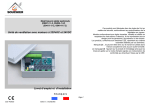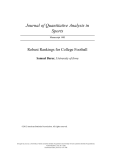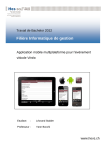Download álvaro garcía - moya herrera multiplatform mobile software
Transcript
ÁLVARO GARCÍA - MOYA HERRERA
MULTIPLATFORM MOBILE SOFTWARE DEVELOPMENT
Master of Science Thesis
Examiners:
Professor Mikko Tiusanen and
MSc Juha-Matti Vanhatupa
Examiners and topic approved by
the Faculty of Computing and
Electrical Engineering Council
03.04.2013
i
ABSTRACT
TAMPERE UNIVERSITY OF TECHNOLOGY
Faculty of Computing and Electrical Engineering
GARCÍA-MOYA HERRERA, ÁLVARO: Multiplatform mobile software development
Master of Science Thesis, 49 pages, 35 appendix pages
April 2013
Major subject: Multiplatform software development
Examiners: Professor Mikko Tiusanen
MSc Juha-Matti Vanhatupa
Keywords: Multiplatform software development, educational mobile game,
game design, game development.
This thesis considers how to achieve efficient multiplatform mobile software development. A mobile application is developed as a vehicle to demonstrate how this can be
done in a particular instance. The educational mobile game is focused on road safety for
pedestrian, mostly children.
The thesis is divided into three parts. In the first section, issues related to multiplatform
applications are explored. Second chapter explains about educational game, alongside
the target platforms selected and the integrated development environment chosen. Finally, the evaluation process is described, where the performance of the educational
game is tested on the target platforms and the results are shown.
ii
PREFACE
During the seven years that I spent between my Bachelor and my Master degree, I have
never been sure if I wanted to be a computer engineer. I guess that is normal for someone who always questions any kind of job, looking for advantages and disadvantages.
There were only two things that I was sure about when I started my studies. One was
that I wanted to study engineering and the other was that I wanted to go abroad as an
exchange student.
Thus, I moved to Finland in 2011 to finish my degree at Tampere University of Technology. For my Master’s thesis I wanted to work on something that I would be proud of
when it was finished. In that sense, I felt lucky to meet my supervisors, prof. Mikko
Tiusanen and assistant professor Juha-Matti Vanhatupa, because together we found a
great idea as topic for my thesis. I would like to thank them for their support and patience during feedback sessions.
The greatest gratitude is for my family, my girlfriend Patricia, and my friends. Without
them, none of my plans would be possible. Firstly, my family and friends supported my
idea of going to Europe to study. My family encouraged me to do it by any means necessary. Then, Patricia helped and supported me over these two years in any way she
could.
Tampere, April 23th, 2013
Álvaro García – Moya Herrera
iii
LIST OF ABBREVIATIONS
API
Application Programming Interface. An interface for software components to communicate to each other.
CSS
Cascading Style Sheets. A style sheet language used for
describing the presentation semantics of a document written
in HTML.
EC-n
Evaluation criterion.
ECA-n
Evaluation criterion of Acceptance level.
ECD-n
Evaluation criterion of Domain technique.
ECF-n
Evaluation criterion of Functionality level.
ECI-n
Evaluation criterion of Integration level.
ECP-n
Evaluation criterion of Performance level.
ECR-n
Evaluation criterion of Regression level.
ECS-n
Evaluation criterion of Load/Stress level.
ECUI-n
Evaluation criterion of User Interface level.
ESA
Entertainment Software Association. Trade association of
the video game industry in the United States.
HTML
HyperText Markup Language. Markup language for creating web pages.
IDE
Integrated Development Environment. A software application that provides facilities to computer programmers for
software development.
IP
Internet Protocol.
MEI
Mobile Entertainment Industry.
iv
MVC
Model View Controller. A software architecture pattern that
separates the representation of the information from interaction with it.
NFR-n
Non-Functional Requirement
NFMR-n
Non-Functional Maintainability Requirement
NFPR-n
Non-Functional Performance Requirement
NFPOR-n
Non-Functional Portability Requirement
NFPOLR-n
Non-Functional Policy Requirement
NFRR-n
Non-Functional Reliability Requirement
NFSR-n
Non-Functional Security Requirement
NFSAR-n
Non-Functional Safety Requirement
NFTR-n
Technical Environment Constraints
NFUR-n
Non-Functional Usability Requirement
OS
Operating System. Software that manages computer hardware resources and provides services for programs.
SDK
Software Development Kit. Software development tool that
helps to create applications for a certain software package
or framework.
UC-n
Use Case
UCD
Use Case Document
UR-n
User Requirement
UFR-n
User Functional Requirement
XML
Extensible Markup Language.
1
CONTENTS
1. Introduction .................................................................................................................2 2. Effective Multiplatform Mobile Software Development ............................................4 3. Educational Gaming for Traffic Safety.......................................................................7 4. TiWalkingSafe ..........................................................................................................11 5. Technologies .............................................................................................................14 5.1. Apple OS ......................................................................................................14 5.2. Android OS ..................................................................................................17 5.3. IDE: Appcelerator Titanium.........................................................................19 6. Game Implementation ...............................................................................................22 7. Evaluation .................................................................................................................30 7.1. Quantitative results.......................................................................................32 7.2. Validation .....................................................................................................38 7.3. Summary ......................................................................................................39 8. Conclusions ...............................................................................................................42 References .......................................................................................................................44 Appendix 1: System Requirement Document.................................................................51 Appendix 2: System Design Document ..........................................................................63 Appendix 3: User’s manual.............................................................................................80 2
1. INTRODUCTION
Technology has become an integral part of our lives. Computers have been accepted as
a way to educate the new generations. Mobile phones are more important for some people than caffeine or exercise. According to Van Dillen et al. (2012), the number of mobile devices in use exceeds the number of people with shoes.
Smartphones have become attractive and common as personal devices, surpassing
the former mobile phones. As smartphone and tablet use rises, companies are developing mobile applications for customers and end users. According to Eddy (2011), there
were more than 550 million mobile Internet users in 2010, and the number is expected
to surpass 1 billion by the end of 2013. Users of all these mobile devices, like iPhone
(Apple 2013), iPad (Apple 2013), Blackberry (Blackberry 2013), Android (Android
2013), Windows Phone 7 (Microsoft 2013), or even eReaders (Schuessler 2010), create
a never-ending demand for more and more unique and useful mobile applications. Users
want mobile applications to be simple and fast. Just one bug or usability issue can spoil
the entire experience.
Mobile gaming is what people use their phones for most of the time, over checking
the weather, maps, or social networking. Between 70% and 80% of all downloads are
games, 37% of users of iPhone play daily, and 84% of tablet owners play games (Corasaniti 2010). That is why the Mobile Entertainment Industry (MEI) has grown 63%, in
terms of worth, from 2010 to 2014. One reason for the increased interest towards games
is the increasing popularity of games. The Entertainment Software Association (2011)
stated that gamers are not children or teenagers exclusively. The average of a gamer
now is above 30 years old. Games have grown in complexity and keep growing as the
technology advances. Games include features like artificial intelligence in the game
characters, networking or sophisticated engines (Blow 2004). However, Bethke (2003)
noted a trend that the most successful games only have a few gameplay elements that
have been extremely well tuned.
3
According to Janssen (2011), the next step, in terms of revenue, in gaming is about
in-game purchases. Those are game items or points that a user can purchase for use
within a virtual world to improve the character or enhance the playing experience. Ingame purchases are expected to reach $11 billion by 2015.
This thesis will consider multiplatform mobile software development. An educational mobile game will be created oriented to road safety hazards for children, as a vehicle to the thesis. The game will be implemented using Appcelerator Titanium as the
integrated development environment (IDE). Then the performance will be tested over
two target platforms: iOS 6 (Apple 2013) and Android OS 4 (Android 2013). The testing process and all the experiences about the platforms, the IDE, and the mobile game
will be reported.
The thesis is structured in five parts. Chapter 2 considers effective multiplatform
software development more closely. In Chapter 3, the educational mobile game developed is explained. Chapter 4 presents the design of the mobile game. In Chapter 5, the
technologies used in this thesis are explained. Chapter 6 exposed the implementation of
the game, relating the game design with the technologies used. Chapter 7 covers the
evaluation process of the application, before conclussions.
4
2. EFFECTIVE MULTIPLATFORM MOBILE SOFTWARE DEVELOPMENT
Dallera (2011) states that implementing software on mobile devices is hard, everything
is more complicated to accomplish than it is on the web or on the desktop. Since the
platforms are fairly new, development tools and frameworks still have some room for
improvement. Nowadays, if a customer needs an application to run on several platforms, the development team is forced to implement a different application for each
platform. This is hard, because every small change or update of the application needs to
be made in each of the native environments.
A common debate between developers is on which solution is better, native or multiplatform environment. When implementing on native environment, applications are
fast and there is full access to the resources of the device. Those native applications are
available on online stores, like Apple Store (Apple 2010) or Google Play, formerly
known as Android Market (Google 2012). However, native applications are expensive
to develop and it is mandatory to pass an approval process to be published. On the other
hand, implementing on multiplatform environment provides a set of advantages. Like
native applications, multiplatform applications get access to the resources of the device,
are quick, and are available on online stores. Unlike native applications, the cost of the
development process on multiplatform applications is reasonable.
Table 2.1. Summary of Native versus Multiplatform environments
Feature
Native environment
Multiplatform environment
Accessibility to resources
Full
Full
Average performance speed
Fast
Fast
Online stores
Available
Available
Development cost
High
Reasonable
Approval process
Mandatory
Customer’s decision
2. EFFECTIVE MULTIPLATFORM MOBILE SOFTWARE DEVELOPMENT
5
As Table 2.1 depicts, both options provide a set of similar benefits, and users usually
do not distinguish between them. According to Viswanathan (2012), multiplatform applications seem to be popular, because business of any size is able to offer products and
services on mobile devices, under a reasonable cost, instead of implementing in the native environments, where the costs rise.
The idea behind most multiplatform frameworks is to limit development time, and
the ideal solution is to write once and run everywhere, so in that sense, multiplatform
development helps (DuPont 2012; Warren 2012). Developers can save time by coding
only in one programming language, which can be compiled for and executed in several
platforms. Figure 2.1 illustrates the process of how a multiplatform framework actually
works. It manages a unique source code, handling the database of devices, in case the
application needs it. Later, through the framework, the source code is built and executed
over any platforms that the customer requires.
Figure 2.1. Multiplatform Framework Process
Multiplatform environments may be divided into two categories. The first category
requires building individually for each platform that it supports. This does not mean that
there is a native environment. It means that even using a multiplatform environment;
developers have to find a different way to implement the code for each. For example,
developers create functions, one per each platform that produces the same result but
2. EFFECTIVE MULTIPLATFORM MOBILE SOFTWARE DEVELOPMENT
6
differently. The other category can be executed on any platform without specific preparation. An example of the second category is a source code implemented in an interpreted language, like JavaScript, or a pre-compiled portable bytecode. For those source
codes, the interpreters or run-time packages are standard components of all platforms
supported.
Developing on multiplatform environments carries some problems, such as needing
to adapt to the different sizes of the screen or the lack of enough memory to run applications. The main aspect about multiplatform applications is to create a single source code
that is available to execute on several platforms. Another important issue is to investigate what are the functional differences of the code in each platform. This thesis considers how to efficiently develop multiplatform mobile software, that is, investigates how
to develop mobile application for different platforms only once, without using native
environments.
The approach to the problem is constructive. It is going to present and evaluate an
example implementation of an educational game, which executes using a multiplatform
framework. The evaluation of the thesis provides results from the tests driven over the
application. Those results demonstrate some differences in performance on different
platforms.
7
3. EDUCATIONAL GAMING FOR TRAFFIC
SAFETY
Schofer et al. (1995) found that a majority of child pedestrian crashes involved a sudden
appearance of the child pedestrian moving quickly across the street: this suggests that
children cross the road at unsafe locations. In the same way, Forsythe and Berger (1973)
reported that the reason for unsafe pedestrian crossings was mainly time-related. A need
to hurry or a desire to keep moving was the main reason behind the lack of caution.
Hamed (2000) concludes that pedestrians’ expected waiting time is influenced by the
number of attempts needed to successfully cross the street.
According to Brewer et al. (2005), pedestrians did not always wait to cross the street
when all lanes were completely clear, rather, they anticipated that the lanes would clear
as they crossed and used a “rolling gap” to cross the street, a separate gap for each lane
of traffic coinciding with the pedestrians’ path across the street. Table 3.1 summarizes
the conclusions of the previous studies.
Table 3.1. Summary of safety pedestrian studies
Author
Ideas
Majority of pedestrian crashes involve a
Schofer et al. (1995)
child moving quickly across the street.
Reason for unsafe crossings was mainly
Forsythe and Berger (1973)
time-related.
Pedestrians’ waiting time has profound
Hamed (2000)
influence on the number of successful attempts to cross.
Pedestrians anticipate that the lanes would
Brewer et al. (2005)
clear, crossing through rolling gaps.
Thus, it is necessary to educate children to be aware of the threats of the roads.
Safety education can be one of the best ways to arm children against traffic hazards.
3. EDUCATIONAL GAMING FOR TRAFFIC SAFETY
8
Safety tips often given to children for crossing the street involve very easy-tounderstand directions.
Hochbaum (2000) gives a set of specific strategies to parents about teaching their
children, ages 8 to 9: to cross at a green light, look in both directions of the road before
crossing, not to cross between parked cars, and to avoid streets with heavily traffic or
difficult intersections. Parents and educators should be the best to educate children
about safety pedestrian education, but they may assume that finding a safe place to cross
is a relatively simple task when in fact it is not intuitive for young children. Parents often overestimate children’s’ abilities. Dune et al. (1992) examined parental expectations
of their children’s knowledge and road safety behavior. They found that parents expected their 5- and 6-year-old children to be as proficient in knowledge and behavior as
9-to-10-year-old children. Rothengatter (1981) found that, in general, video training
improved children’s knowledge of safety but did not change their behavior. In video
training children watch educational videos about road safety, about dangerous situations
and its consequences.
However, Thomson et al. (2005) developed a computer training program where
children aged 7, 9, and 11 participated in four training sessions with an adult trainer and
two other children. In the computer program, the children would guide a character
through a neighborhood, and when it was necessary to cross the street, the children
would press a “go” button when they thought it was safe to do so. When it was safe, the
character crossed and when it was not safe, the image would freeze. The goal of the
trainer was to listen children’s reasoning about why they chose to make the incorrect
decision. The trainer guided their thinking in the appropriate direction, and avoided imposing solutions.
3. EDUCATIONAL GAMING FOR TRAFFIC SAFETY
9
Table 3.2. Summary of educational programs and studies
Author
Ideas
Provide a set of strategies to parents about
Hochbaum (2000)
teaching children to cross safely.
Examined parental expectations of chilDune et al. (1992)
dren’s knowledge and their behavior on
the street.
Found that video training did not change
Rothengatter (1981)
children’s behavior.
Developed a computer-training program
Thomson et al. (2005)
for children.
In order to change children’s behavior regarding road safety, one approach, suggested by the studies summarized in Table 3.2, could be training sessions relying on
games. Gaming helps young people to learn through practice, they learn how to fail,
overcome that failure, and succeed. In fact, according to Pivec (2009), a game environment provides the motivation necessary for persistent re-engagement by a player and
hence achieves the practice-makes-perfect scenario.
Educational gaming is a topic where many developers want to make a difference,
and nowadays, there are many options available for children. Educational gaming has
found a great opportunity to spread knowledge and tips for children through Internet.
There are a few online games where the main objective is to lead the main character
from a point A to a point B safely.
The online game “3M Streetwise” (Figure 3.1 left) provides the user with a set of
predefined actions to choose. It does not let the user choose what to do using the same
options as in real life, such as crossing the street over with red light on for pedestrians or
to wait before the green light appears (Streetwise 2006). The game is implemented in
Adobe Flash (Gay 2001), formerly known as Macromedia Flash, a software platform
used for authoring vector graphics, animation, and games.
The video game “Frogger” (Konami 1981; Figure 3.1 center) known worldwide has
as goal to bring frogs, main characters of the game, safely to their homes, avoiding cars,
trucks, or other animals. This is not a reasonable option to train children about safety
3. EDUCATIONAL GAMING FOR TRAFFIC SAFETY
10
when crossing roads, because the objective in this game is to avoid the hazards by advancing in rolling gaps, which is dangerous as noted above.
The game “Stop, Look, and Listen” (Tales of the Road 2009; Figure 3.1 right) is an
online game based on stopping the main character, observing, and crossing at the moment the user believes it is right, otherwise, the character is knocked down by a car and
thrown far away, and the user has to try again.
Figure 3.1. Safety pedestrian education online games
None of these educational games illustrated in Figure 3.1 are ideal, because none of
them provide the freedom to the user to fully control the character, interacting with the
game and the environment created. They focus on providing a set of predefined actions
where the user can only choose one option out of three. That means that the learning
process in the same for all the users, conducted by the developer, who is in charge of
deciding what is important for the user and what is not.
A game, which is educational about road safety, has to be able to merge gaming
with education in an approach attractive to the user. The game has to provide more freedom to the user, giving a wider selection of possibilities, making it evident that there are
places where vehicles have serious dificulties to stop. Through practice, users should
become more cautious when they cross roads in their daily life. In this way, a user
would get an understanding of the relation between cause and effect, good or bad. In
that sense, the user should experience real situations and acquire implicit knowledge
about them.
11
4. TIWALKINGSAFE
The mobile application developed in the thesis is a mobile game oriented to pedestrian
safety education. It is called TiWalkingSafe and it is placed in a 2D worldview, to make
it as simple as possible for the user to get in touch with the environment. The game is
not time-related: there is no time limit to perform actions or going to some point of the
world. The reason because the game is not time-related, is to teach the user that there
should not be hurry when he or she is going to cross the road, in real life.
Figure 4.1. Evolution of game world
Figure 4.1 illustrates the evolution of the game world. The first design, after the paper prototypes depicted in Appendix I, is the image of the prototype in the Tiled Map
Editor (Lindeijer 2008). It has only a rough design of the buildings, roads and crosswalks. In the second design, the roads have lines and the corners are more detailed.
There are crosswalks for pedestrians at some points and there are also designed places,
like shopping center, school, or home, where the user shall guide the character. In the
last iteration of the design, the final version, there are cars and traffic lights placed in the
4. TIWALKINGSAFE
12
world and also the initial spot where the player starts the level. The initial spot for the
player is in the upper left corner of the image, in front of the school, where the game
starts.
Every level has “synchronization points” and the goal is to collect them. Each synchronization point contains new instructions for the user to go to a new address. In order
to collect these points, the user has to keep the character safe from the hazards of the
game. When the user brings the main character in front of the synchronization point, the
user has to click on the screen where the point is placed, and if the main character is
placed correctly, the user receives new instructions, if not, the user has to bring the
character to the correct location.
In that way, the game is intended to allow users to interact with the game and learn
about road safety, how traffic lights work, and avoid putting themselves in dangerous
situations. The mission of each level is quite standard, the character is requested to go
somewhere to complete a task and return home safe. As in any game, there is a story to
motivate the user to play. In this case, the story is about a 7- to 9-year-old character,
illustrated in Figure 4.2, who has to walk to different places after school, before returning home for dinner. The character has to accomplish a set of activities, like going the
supermarket, then going to basketball practice, or picking up his younger relative from
somewhere and returning home safely. In order to do that, the user leads the character
through the world designed, which contains standard road hazards, such as cars, depicted in Figure 4.3, pedestrian crosswalks, and traffic lights.
Figure 4.2. Game main character
4. TIWALKINGSAFE
13
Figure 4.3. Game cars
The game promotes knowledge about road safety to users who spend enough time
practicing with it. Users learn when they fail, in particular about why they fail and how
they can avoid that failure in the future.
14
5. TECHNOLOGIES
TiWalkingSafe is the educational mobile game implemented in this thesis. It is developed using JavaScript as the programming paradigm. There are two target platforms
where the performance of the game is analyzed, Apple OS (Apple 2013) and Android
OS (Android 2013). The integrated development environment of the multiplatform development framework employed called Appcelerator Titanium (Appcelerator 2006) is
also described.
5.1.
Apple OS
Apple OS (Apple 2013), previously named iPhone OS and currently known as iOS, is
developed and distributed by Apple, Inc. It is a proprietary operating system that supports Apple devices, such as iPhone, iPad, iPod Touch, or Apple TV, on a per-device
basis, meaning that it is dependent of the Apple device. Apple does not license iOS for
installation on non-Apple devices. Apple iOS is a mobile version of Apple’s OS X operating system (Apple 2002). As such it has a UNIX (Ritchie & Thompson 1978) basis,
like OS X has. Currently the last major update is iOS 6, released in September 2012.
The user interface of iOS is based on the concept of direct manipulation, which uses
touch inputs and transforms them into actions and requests, using some internal controls. Figure 5.1 illustrates a few examples of direct manipulation gestures. The first
image is the gesture of clicking at some point on the screen. The second gesture is to
zoom in and out at a picture or a website, done dragging two fingers. Finally, the last
gesture is to move an object using three fingers (Caughey 2012). Apart from the gestures illustrated in Figure 5.1, there are other gestures such as double-tap, (to double
click) or tap-and-move, which is to make a drag-and-drop action (Caughey 2012).
5. TECHNOLOGIES
15
Figure 5.1. Direct Manipulation Gestures (Caughey 2012)
The applications developed for iOS are written in Objective-C, a high-level, objectoriented programming language that adds messaging to the standard C programming
language. Xcode became the development environment for iOS, with the release of
Xcode 3.1. (Brocklehurst 2010)
After the release of iOS 4, multitasking is no more limited to a selection of applications, as it was before. Multitasking can now work on several applications such as background audio, voice over IP, notifications, task completition, or fast application switching.
A grasp of the iOS architecture helps to understand how it works. Figure 5.2 provides a graphical overview of the architecture of iOS. Each layer of the iOS architecture
has a different function. The application layer is where applications installed into iOS
are running. Under it, there is the layer of frameworks and the Application Programming Interface (API), used for communication between software components. Below it,
there is the layer comprised of Objective-C and C libraries. Then, there are the kernel,
drivers, and services of iOS. The last layers are the ARM processor (Masterton 2011),
the firmware, and the hardware of the device. When the hardware makes a change in a
register, each layer receives the update from the previous one and communicates it to
the next layer till the information reaches the application layer.
5. TECHNOLOGIES
16
Figure 5.2. Overview of iOS Architecture (Silicon News 2012)
Lynn (2012) conducted an analysis of applications that run over iOS, presented in
Table 5.1. These applications are the best-known features of the system, like the possibility of launching applications by voice commands, making a video conference over
the cellular network, reading a website in offline mode, 3D mapping, or sharing photo
streams.
Table 5.1. Analysis of iOS 6 (Adapted from Lynn 2012)
Feature
Launch application by voice
Launch third-party applications by voice
Automotive integration
Message replies for incoming calls
Set call reminders
Video calling over cellular network
Offline reading of websites
Share photo streams
Store and access tickets
Navigation
3D Mapping
Information about nearby businesses
iOS
Native application
Native application
Yes
Yes
Yes
Yes
Yes
Native application
Native application
Turn-by-turn
Apple Maps
Yes
Apple iOS has native applications for launching application by voice, it has automotive integration, and it is possible to make a video call over a cellular network. In the
same way, iOS allows the user to reply with messages to incoming calls, and set call
5. TECHNOLOGIES
17
reminders, so the user can call someone in the future. The navigation is turn-by-turn,
that is directions for a selected route are continually presented to the user in the form of
spoken and visual instructions (Button & Hensher 2001). In the same way, it has 3D
Mapping using Apple Maps (Apple 2013), and it is possible to get information about
nearby businesses. Apple iOS includes native applications for sharing photo streams and
for storing and accessing tickets, like flight or movie tickets.
5.2.
Android OS
Android OS (Android 2013) is a Linux-based (Linux 2009) operating system designed
primary for touchscreen mobile devices, such as smartphones and tablet computers.
According to Elgin (2005), it was initially developed by Android, Inc, which Google
bought in 2005.
Android is open source and its permissive licensing allows the software to be modified and freely distributed by device manufacturers, wireless carriers, and developers.
Latest stable version is Android OS 4.2.1, Jelly Bean, released in November 2012. The
user interface of Android OS is based on the same concept of direct manipulation as
iOS. However, the architecture of Android is different from iOS (Figure 5.3).
Figure 5.3. Overview of Android OS Architecture (Adapted from Kann 2010)
5. TECHNOLOGIES
18
Android OS is a software stack, where each layer is a group of several program
components. Each layer provides services to the layer just above it and receives requests
from the layer below it. The top layer in the architecture is the applications layer. Applications, like a web browser, SMS client application, or the contact manager, are in this
layer. Just below it, there is the application framework layer, which includes a set of
managers. Those managers control the basic functions of the device, like resource management, location, and voice call management. The next layer, below the application
framework, is the Android runtime layer. This layer consists of a virtual machine and
Core Java libraries. Although these libraries provide most of the functionalities defined
in the Java core libraries, they are different from these and Java ME libraries (Oracle
2013). Below, there are the native libraries of Android, which enable the device to handle different types of data, such as SQLite databases (SQLite 2010) or OpenGL
(OpenGL 2013). The base layer is the Linux kernel. It interacts with the hardware and
contains all the drivers, programs that control the hardware. It also manages the memory, processes, networking, and security.
It is clear that Android OS architecture is similar to iOS architecture, but the difference remains in the hardware. Unlike iOS, completely dependent on the hardware, Android OS cannot take advantage of all the different resources and capabilities of each
device, because it can run on different devices. Lynn (2012) concluded that both are
very similar in terms of usability, but he pointed out that the hardware is an important
issue. He analyzed on Android OS the same set of features that he analyzed on iOS, in
order to find some differences between them. Table 5.2 depicts the results of the analysis.
5. TECHNOLOGIES
19
Table 5.2. Analysis of Android OS 4 (Adapted from Lynn 2012)
Feature
Android OS
Launch application by voice
Third-party application
Launch third-party applications by voice
Third-party application
Automotive integration
Yes
Message replies for incoming calls
Yes
Set call reminders
No
Video calling over cellular network
Yes
Offline reading of websites
Yes
Share photo streams
Only Samsung Galaxy S III
Store and access tickets
No
Navigation
Turn-by-turn
3D Mapping
Google Maps
Information about nearby locations
Yes
Android has less native applications than iOS, because third-party companies or
developers make them. Android OS incorporates automotive integration, video calling
over cellular network, and offline website reading, as iOS does. However, Android OS
is not able to set reminders for future calling or store and access tickets. One feature that
is more complete and useful for iOS is Google Maps, which works better than Apple
Maps (Chan 2012).
5.3.
IDE: Appcelerator Titanium
An IDE is a software application that provides facilities to software developers for their
work (Nourie 2005). It usually consists of a source code editor, build automation tools,
which run scripts such as compiling source code or packing binary code, and a debugger, a tool that helps test and examine source code.
A suitable IDE for this thesis had to be multiplatform, able to emulate the target
platforms, iOS and Android OS, and use same common source code. According to Hay
(2012), there are ten solutions for creating cross-platform mobile applications, which
are Sencha Touch 2 (Sencha 2008), jQuery Mobile (jQuery 2009), Tiggzi (Exadel
1999), AppMakr (AppMakr 2012), iBuildApp (iBuildApp 2010), Widgetbox (Flite
2009), foneFrame (Azalea 1992), PhoneGap (PhoneGap 2004), Appcelerator Titanium
5. TECHNOLOGIES
20
(Appcelerator 2006), and appMobi XDK (AppMobi 2012). These require initial deep
knowledge about HTML (HyperText Markup Language; Berners-Lee 1990), CSS (Cascading Style Sheets; W3C 2013), Javascript (Flanagan 2006), and, sometimes, about
jQuery (jQuery 2009) or XML (eXtensible Markup Language; W3C 2013), to develop
an application using the previous development environments. The exceptions are
Appcelerator Titanium and PhoneGap, which only require knowledge about Javascript.
A deciding factor between the two last environments is that PhoneGap is oriented towards business applications, since Adobe had become its sponsoring organization, and
Appcelerator Titanium had been created as a game designer tool. As the application was
an educational mobile game, Titanium was likely to be a more suitable IDE to work
with. It is a platform for developing mobile, tablet, and desktop applications using web
technologies, introduced in December 2008. All application source code gets deployed
to the mobile device where it is interpreted using a Javascript engine (Flanagan 2006).
The architecture of the Appcelerator Titanium IDE is depicted in Figure 5.4. It is
divided into four layers, the top one being the application coded in JavaScript or HTML.
Below the application layer, there is the Titanium software development kit (SDK), a
set of software development tools that allow the creation of applications, and the API
libraries. The next layer is the mobile operating system, like iOS or Android OS, or the
browser, for mobile web applications.
5. TECHNOLOGIES
21
Figure 5.4. Overview of Appcelerator Titanium Architecture (Titanium 2006)
Appcelerator Titanium allows rapid prototyping, is web-oriented, and uses a common programming paradigm, namely Javascript. It is a cross-platform environment for
development, and it has a growing community, around 200,000+ developers sharing
their knowledge and with more than 35,000 applications. On the other hand, there are
also a few disadvantages, like the growing complexity directly linked to the complexity
of the application, the bigger the application gets the hardest is to keep simple the code,
or the increasing difficulty to get free modules for developers. Despite the disadvantages, Appcelerator Titanium was chosen as the IDE to create the mobile game for this
thesis.
22
6. GAME IMPLEMENTATION
TiWalkingSafe is implemented in the integrated development environment called
Appcelerator Titanium, in JavaScript, and it is executed on emulators for iOS and Android OS. The implementation process of the game starts with the design of the interfaces of the game, Figure 6.1, till the creation of the engine that moves the cars through
the world and changes the color of the traffic lights.
Figure 6.1. Examples of interfaces of the game
The architecture of the game is the Model-View-Controller (MVC; Reenskaug et al.
2008) architecture. The view layer is the user interface of the game, Figure 6.2, the controller layer is in charge of transforming the user’s inputs into actions or requests for the
game, and the model layer is going to control all the changes produces by the user’s
actions. Through Titanium, the three layers are implemented using JavaScript.
6. GAME IMPLEMENTATION
23
The game has been developed using layers of objects, as depicted in Figure 6.2.
These layers are an easy way to implement the central engine of the game. In fact, there
is no need to use pre-built modules provided by Appcelerator, which in some cases, are
old modules that do not work with the current versions of the emulators. The idea is to
create a stack of layers, where each layer is above the previous. Then, all of them are
combined to create the final view of the game, as Figure 6.3 depicts. For example, as
depicted in Figure 6.2, the lowest layer is the map of the world. The map is inactive, so
it does not perform any action or movement. Then there are cars placed over the map,
moving on the roads. Over the cars, there are traffic lights placed, on the map, trying to
avoid setting a car and a traffic light in the same spot. Over them, lay the synchronization points and, finally, the main character layer on top of them, but it interacts with the
rest of the layers below, especially with cars and synchronization points. The user controls the main character, but he does not control the cars or traffic lights, thus those features have to be in different layers. It is the user who interacts with a synchronization
point, clicking it, not the main character.
Figure 6.2. Layer architecture of the game.
6. GAME IMPLEMENTATION
24
Cars and traffic lights are independent entities of the game. They proceed driven by
the game engine, not by the user. Cars are implemented to stop when the traffic light is
green for pedestrians, when it is red for cars. Cars drive on the right side of the road,
like for 66% of world population (Lucas 2005). The traffic lights change their color
every predefined amount of seconds from red to green.
Figure 6.3. Example of the initial level of the game
As it is explained before, in each level of play the user has to handle the main character to collect synchronization points, distributed in the world, while avoiding dangerous situations. In order to reach safely the synchronization points, the user shall use the
pedestrian road-crossings when the traffic light is green for pedestrians. When the user
considers that the main character is placed correctly near the point, the user interacts
with the game, clicking on the point, and if the character’s location is correct, the user
receives new instructions and the map is cleared.
The user controls the main character through the set of buttons on the lower part of
the game interface (Figure 6.3). The set of buttons, which direct the character up, down,
6. GAME IMPLEMENTATION
25
left, right, or in diagonal, are at the top of the layer architecture. The set of buttons is
divided in three columns, and between those columns, there are small spaces: this is the
only way to get the eight-button set in one layer without overlapping. When the user has
driven the main character to the synchronization point and touches the screen where the
symbol of the point is placed, the game checks if the location of the main character is
correct and if so, the map is cleared and the user receives a message with the next address where to go. If not, the game shows a message to the user that the main character
is not in the right place to receive the information.
Appcelerator Titanium does not require HTML skills, because the user interface and
the engine of the game are implemented using JavaScript. Following, there are examples of the code, represented using JavaScript or pseudocode. All the interfaces of the
games are windows, which is how Titanium represents interfaces. A set of variables,
such as buttons, image views, text fields and labels, are added to those windows. Each
variable has its own characteristics, like size, position or, title (Program 6.1). The attributes written in percentages, like size or position of the object, are percentages of the size
of the screen.
var start = Ti.UI.createButton
({
title : “START”,
top : ‘70%’,
width : ‘70%’,
height : ‘25%’
});
Program 6.1. Creation of the button Start.
In order to show the first window, or interface of the game the function open of the
window needs to be called. On the one hand, iOS needs to create a navigation group to
handle the navigation between interfaces. Then, it loads the initial interface as the window of the navigation group (Program 6.2). The rest of the navigation is based on opening the new interface through the navigation group (Program 6.3). On the other hand,
Android OS only opens the new interface and closes the previous one (Program 6.4),
but the developer has to remember which close it when necessary. The navigation group
6. GAME IMPLEMENTATION
26
of iOS manages the interfaces automatically. Program 6.2 and 6.3 are only executed
when the application is running on iOS emulator, and Program 6.4 is executed only on
Android, but the codes are meant to do the same, being the navigation controller for the
application.
var navGroup = Ti.UI.iPhone.createNavigationGroup
({
window : index
});
Program 6.2. Creation of Navigation Group.
button.addEventListener(“click”, function(e)
{
navGroup.open(new_window);
});
Program 6.3. Navigation through iOS.
button.addEventListener(“click”, function(e)
{
new_window.open();
current_window.close();
});
Program 6.4. Navigation through Android OS.
In each interface of the game there is at least one button. To capture the action of
pushing the button, Titanium provides event listeners, as in Program 6.3 and 6.4. The
system activates these listeners when a button is pushed. Sometimes, those actions are
only to change the interface for a new one. Inside the game interface, the directional
buttons are ready to receive a click to move the main character in a specific direction.
Titanium states that the position x, y of the character has two different values. The xlocation is called left, and the y-location is called top. When the user pushes the right
button, the x-location of the main character increases by 10 pixels, so the character
moves forward to the right side and, position on the x-axis is increased by 10. If the user
6. GAME IMPLEMENTATION
27
pushes the down-and-right button, the x-location and y-location of the main character
increase by 10 pixels each one, so the character moves on both axes, x and y, and their
values are increased by 10 each (Program 6.5).
var moveDownRight = (function() {
player.top += 10;
player.left += 10;
});
Program 6.5. Movement of the main character.
Once the button to start the game has been pushed, the rest of the objects are placed
over the layer of the world: the main character, the synchronization point, the cars, and
traffic lights. The user does not control the cars and the traffic lights. For traffic lights,
the behavior dictates that every 3 seconds its color has to change from green to red or
vice versa (Program 6.6). For cars, it is more complicated. Each car has to move forward each second. However, the car needs to check the current direction in advance,
because it may have to turn to another direction along the road (Program 6.7).
var changeLightColor = (function() {
// Loop over all the traffic lights
for(i to all_lights){
// If the light is red
if(i is red){
// Change to green
change i to green;
} else {
// If not, then is red
change i to red;
}
}
});
Programme 6.6. Pseudocode of behavior of the traffic light.
6. GAME IMPLEMENTATION
28
var aiCars = (function(car, dir, i) {
check_direction(car, x, y, dir, i);
// If dir is 14, 1 means Up
// and 4 means Right
if(dir == 14) {
// Move Up-Right
car.left += 10;
car.top -= 10;
}
...
});
Program 6.7. Behavior of the cars.
Once the user has taken the main character to the synchronization point and clicks it,
the synchronization point compares the x- and y-location of the main character with the
x- and y-location of the point. If the main character is far away from the synchronization
point, the function shows an error message to the user, asking to get closer to the synchronization point. If the main character is next to the synchronization point, the functions shows an acceptance message to the user, explaining where the main character is
and what is the new address to go to. After the message, the world is cleared (Program
6.8). Cars are stopped and traffic lights do not change their color anymore, because the
user passed the level and there is a new level available.
6. GAME IMPLEMENTATION
29
var synchronize = (function() {
if
(player.top
==
point.top
player.left == point.left){
alert(“Congratulations!...”);
clearInterval(aiLights);
clearInterval(aiCars);
} else {
alert(“Content blocked!...”);
}
});
Program 6.8. Behavior of the synchronization point.
&&
30
7. EVALUATION
Evaluation of the thesis consists on a set of criteria, transformed in test cases, evaluated
over the performance of the mobile game executed on the emulators of iOS and Android
OS. The results are presented in tables, followed by the validation of the testing process
and the summary of results.
Mobile application testing is more complex than desktop or web application testing,
due to the mobile nature of the device when compared to computers. Mobile software
testing involves four main factors, shown in Figure 7.1. These factors are: the scope of
the test process, the different levels that a test case can have, the environment around the
test process, and the different techniques necessary to do the test process (Selvam &
Karthikeyani 2011). The approach in the present evaluation will be based on these factors, so they will be presented as guidelines.
Figure 7.1. Mobile Application Testing (Selvam & Karthikeyani 2011)
Emulator testing is considered to be cost effective and useful to cover a wide range
of devices and different screen resolutions, but it is not a realistic testing process. Testers have to assume that emulator is using the computer resources, not the resources that
7. EVALUATION
31
an actual device has. Testing on real devices is considered to be the most realistic solution but is a costly solution. The ideal solution is to start initial phase of the testing on
emulator and end on the real devices. (Selvam & Karthikeyani 2011)
The levels of testing consist of integration, user interface, regression, and acceptance
testing. The first level is integration testing, which tries to find defects in the interfaces
between components and in the interaction between modules. The next level is user interface testing, which is done through touch screens, screen orientation, and shortcuts to
the application. The next level is regression testing, which is based on executing corrected parts of the code that contained errors before. Its goal is risk management, because sometimes a fixed code produces more problems than it solves. The last level of
testing is acceptance testing, which verifies that the application fulfills the requirement
specifications. Users run or test the application to ensure this level. (Selvam &
Karthikeyani 2011)
The test scope is based on the test levels, consisting on performance, functional, and
load/stress testing. In terms of performance testing, mobile carriers can affect usability
and speed of the software application. The ideal approach would be to test the software
application in different devices, using carriers from different countries. One of the most
essential testing procedures is to verify the basic functionality of the software application. In some cases, the functions may be device-oriented, so in those cases testing
should occur as soon as possible, in the early phase of development. The last issue related to the test scope is load/stress. Over the years, mobile software has started using
more and more memory and other resources. The best way to stress testing on the mobile application is by performing repeated operations at different speeds, very quickly or
very slowly. (Selvam & Karthikeyani 2011)
The last factor in mobile application testing is the technique used to carry out the
tests. Techniques can be manual, scenario, and domain testing. Manual testing is based
on interaction between tester and device, where tester follows step-by-step instructions
and verifies the result. Although sometimes, manual testing process is tedious for the
tester. Scenario testing is based on designing as many situations as testers could imagine
happening with the application. For example, one case scenario could be having multiple applications running, press the home key, and return to the target application, ob-
7. EVALUATION
32
serving the results of the pause in the execution. The last technique is domain testing,
which is based on variables, like inputs or outputs. Testers try to find errors with different input parameters. (Selvam & Karthikeyani 2011)
7.1.
Quantitative results
The evaluation process took place in an emulator environment, because testing on the
device is excluded from this thesis, due to high cost. The author performed the tests.
The quantitative results of the evaluation process are displayed in tables, using the template in Table 7.1. The results of the evaluation are provided in several tables, from Table 7.2 to 7.9. There is a table for each testing level, scope or technique analyzed.
Table 7.1. Evaluation results template
Reference
Description
Rank
Description of
EC-n
test case
M, D, or O
Score
Final score
0.1 to 1
0.1 to 5
Table 7.1 displays the set of features stored for each test case executed over the mobile application. Column “Reference” assigns a unique identifier to the test case, followed by column “Description”. Next, there is a rank assigned for each test case, mandatory “M”, with a value of 5, desirable “D” of 3, or optional “O” of 1. Then there are
the score in the testing process and the final score, Rank times Score. If the test case is
performed perfectly, the Score value is the maximum value, 1, but if the test case has a
low performance, the Score is 0.1. Finally, the final score could be in bold type if the
score is better in one platform than in the other.
7. EVALUATION
33
Table 7.2. Evaluation results on integration testing
Reference
Description
Rank Platform
ECI–01
ECI-02
ECI-03
ECI-04
The application processes any
user input.
The application protects
user’s information.
The application protects
user’s points.
User’s profile is only accessed
through device.
M
D
D
O
Table 7.3. Evaluation results on performance testing
Reference
Description
Rank
ECP–01
ECP-02
ECP-03
ECP-04
ECP-05
ECP-06
Time to load the application
under 5 seconds.
Time to load the application
under 10 seconds.
Time to load the application
under 15 seconds.
Time between click and response under 15 ms.
Time between click and response under 30 ms.
Time between click and response under 50 ms.
O
D
M
O
D
M
Score
Final score
iOS
1
5
Android
1
5
iOS
0.1
0.3
Android
0.1
0.3
iOS
0.5
1.5
Android
0.5
1.5
iOS
0.1
0.1
Android
0.1
0.1
Platform Score
Final score
iOS
1
1
Android
0.1
0.1
iOS
1
3
Android
0.1
0.3
iOS
1
5
Android
0.1
0.5
iOS
0.1
0.1
Android
0.1
0.1
iOS
0.9
2.7
Android
0.1
0.3
iOS
1
5
Android
0.1
0.5
7. EVALUATION
34
Table 7.4. Evaluation results on acceptance testing
Reference
Description
Rank
ECA–01
ECA-02
ECA-03
ECA-04
ECA-05
ECA-06
ECA-07
The application manages new
users.
The application keeps the synchronization points taken.
The application manages a
game world.
The application provides actions to the user.
The application manages cars.
The application manages traffic lights.
The application fits the description provided.
O
D
M
M
M
M
M
Table 7.5. Evaluation results on functionality testing
Reference
Description
Rank
ECF–01
ECF-02
The navigation control of the
application works.
The controller button-set of the
game works correctly.
M
M
The application remains in the
ECF-03
same interface if the user does
M
not change it.
The application does not naviECF-04
gate to an interface when it is
M
not supposed to.
ECF-05
The application has the required setup of the game.
D
The application does not perECF-06
form tasks it was not designed
to do.
D
Platform Score
Final score
iOS
1
1
Android
1
1
iOS
0.5
1.5
Android
0.5
1.5
iOS
1
5
Android
1
5
iOS
1
5
Android
1
5
iOS
1
5
Android
1
5
iOS
1
5
Android
1
5
iOS
0.7
3.5
Android
0.7
3.5
Platform Score
Final score
iOS
1
5
Android
1
5
iOS
1
5
Android
1
5
iOS
1
5
Android
1
5
iOS
1
5
Android
1
5
iOS
0.5
1.5
Android
0.5
1.5
iOS
1
3
Android
1
3
7. EVALUATION
ECF-07
ECF–08
ECF-09
ECF-10
ECF-11
ECF-12
ECF-13
ECF-14
ECF-15
ECF–16
ECF-17
ECF-18
ECF-19
ECF-20
ECF-21
The application needs GPS.
The application needs Wi-Fi
connection.
The application synchronizes
with Facebook and Twitter.
The application works with
peripherals.
The touchscreen supports double-tap gesture.
The touchscreen supports
touch-and-hold gesture.
The touchscreen supports dragand-drop gesture.
The application is accessible
from the device desktop.
The application changes with
the orientation of the device.
The application includes a user
manual.
The application does not lose
information if it is interrupted.
The notifications of the application are clear and visible.
The notifications of the application can be responded.
The application provides appropriate error messages.
The application includes a time
limit for log-in.
35
O
O
O
O
D
O
O
M
O
D
D
M
O
D
O
iOS
0.1
0.1
Android
0.1
0.1
iOS
0.1
0.1
Android
0.1
0.1
iOS
0.1
0.1
Android
0.1
0.1
iOS
0.1
0.1
Android
0.1
0.1
iOS
0.1
0.3
Android
0.1
0.3
iOS
0.1
0.1
Android
0.1
0.1
iOS
0.1
0.1
Android
0.1
0.1
iOS
0.7
3.5
Android
0.7
3.5
iOS
0.1
0.1
Android
0.1
0.1
iOS
1
3
Android
1
3
iOS
0.1
0.3
Android
0.1
0.3
iOS
1
5
Android
1
5
iOS
0.1
0.1
Android
0.1
0.1
iOS
0.5
1.5
Android
0.5
1.5
iOS
0.1
0.1
Android
0.1
0.1
7. EVALUATION
36
Table 7.6. Evaluation results on user interface testing
Reference
Description
Rank Platform Score
ECUI–01
ECUI-02
ECUI-03
The controller button set is
user-friendly.
The resolution of the objects is
acceptable for the user.
The shortcut of the application
is clear on the Home screen.
M
M
D
The learning process for playECUI-04
ing the game is less than 15
M
minutes.
ECUI-05
The user figures out how to
play the game without manual.
D
The user assumes knowing
ECUI-06
how to interact with the sys-
D
tem, without instructions.
It is possible to navigate creaECUI-07
tively around the application,
going from one interface to any
O
Final score
iOS
1
5
Android
1
5
iOS
1
5
Android
0.1
0.5
iOS
0.7
2.1
Android
0.7
2.1
iOS
1
5
Android
1
5
iOS
0.5
1.5
Android
0.5
1.5
iOS
0.1
0.3
Android
0.1
0.3
iOS
0.1
0.1
Android
0.1
0.1
iOS
0.5
2.5
Android
0.5
2.5
iOS
1
5
Android
1
5
iOS
0.1
0.3
Android
0.1
0.3
iOS
0.1
0.1
Android
0.1
0.1
iOS
1
5
Android
1
5
other.
ECUI–08
ECUI-09
The error messages are helpful
for the user.
The error messages adhere to
good practices.
M
M
The error messages of the apECUI-10
plication are also oriented to
D
security.
The application follows design
ECUI-11
guidelines for a particular plat-
O
form.
The application has big icons
ECUI-12
to provide user-friendly navigation.
M
7. EVALUATION
ECUI-13
The application keeps the same
interface-design all the time.
37
M
Table 7.7. Evaluation results on domain testing
Reference
Description
Rank
iOS
1
5
Android
1
5
Platform
Score
Final score
iOS
0.1
0.3
Android
0.1
0.3
iOS
0.1
0.5
Android
0.1
0.5
iOS
1
1
Android
1
1
Table 7.8. Evaluation results on load/stress testing
Reference
Description
Rank
Platform
Score
Final score
The application is loaded cor-
iOS
1
5
Android
1
5
iOS
0.1
0.3
Android
1
3
iOS
0.7
2.1
Android
1
3
iOS
1
5
Android
1
5
iOS
0.1
0.1
Android
1
1
iOS
1
3
Android
1
3
iOS
1
3
Android
1
3
ECD–01
ECD-02
ECD-03
ECS–01
ECS-02
The application does not allow
incomplete information as input.
The application hides the password information.
The application avoids sharing
user’s information.
rectly each time.
The application works with multiple hits on the buttons.
D
M
O
M
D
The application performs corECS-03
rectly when there are quick hits
D
and slow hits.
The application performs corECS-04
rectly when being used for long
M
time, more than an hour.
ECS-05
ECS-06
The application is pushed to the
limits and still works correctly.
The application notifies errors
when it is needed.
O
D
The application behaves propECS-07
erly when the user is switching
between applications.
D
7. EVALUATION
38
Table 7.9. Evaluation results on regression testing
Reference
Description
Rank
Platform
Score
Final score
The application behaves better
iOS
1
5
Android
1
5
iOS
0.3
0.9
Android
0.3
0.9
ECR–01
ECR-02
7.2.
after a change in the code is made.
All the errors have been corrected
in the evaluation process.
M
D
Validation
All too often, testing is thought of as being entirely planned and predictable, full of
scripts and plans. However, in this evaluation, the testing process tries to evaluate problems that can be explained and measure without scripts, to provide valuable information
that enables reaching a valid conclusion. The result of this testing process cannot be
predictable, because each platform has its own behavior.
In that way, there are some aspects of the evaluation process that can be misunderstand or perceived as threats. In the first place, the testing technique used is manual testing in 80% of the cases, for both platforms. This technique is tedious for testers, but it is
also a great opportunity to clarify the result of each test case in the application, instead
of visualizing a result provided by the computer. If the technique is automatic, there is a
possibility to introduce errors in the code of the test case that provides a wrong score on
the evaluation. In the rest of the testing process, the techniques of scenario and domain
testing has been applied also, but only in 20% of the evaluation, because those techniques focus on only a few features of the application.
Another aspect is that the testing environment, as explained before, is not the best
option, because it needs testing in real devices. At the same time as the evaluation, the
emulator has been analyzed, trying to find out whether there are exactly as a device or
different. However, the emulators have a good performance on the evaluation process.
In fact, the emulators shall access to a limited portion of the resources of the computer,
7. EVALUATION
39
to simulate the resources of the device, and apparently the emulator do it that way, but
this is not possible to verify it.
User interface testing and functional testing covered from 60 to 70% of the time in
the evaluation of a mobile application. Thus, the design of a test case has to take into
consideration this aspect, to avoid focusing only on evaluating the user interface and
functionality of the application. In this thesis work, acceptance testing and integration
testing are important features of the evaluation. These are designed to evaluate whether
the application fulfills the system in Appendix 1 and 2.
7.3.
Summary
Table 7.10 illustrates the final comparison between the results obtained in the evaluation
of the application over iOS and the results of the evaluation with Android OS. The total
score is obtained as the sum of the final score of each test case evaluated.
Table 7.10. Comparison between results obtained with platforms
Platform
Total score
Apple iOS
150.9
Android OS
136.8
It is clear that the evaluation score obtained with iOS is slightly better than the
evaluation obtained with Android OS. The maximum amount of points that can be
reached in the evaluation is 205. In percentages, iOS had 74% of success in the evaluation and Android OS had 67% of success. In that sense, the success of iOS executing
the application is not huge over the performance of Android OS with the application,
because there is only a 7% difference between them. The following explores the differences in the results.
The first difference noticed on the evaluation is the loading time of the game. Android OS needs more time than iOS to load the game. That is related to the emulator,
because the emulator of Android is heavier than the emulator of iOS. For Android, it
7. EVALUATION
40
takes much longer because it creates features like activity threads, analytics, or power
management. And then, when the game starts, the emulator of Android checks in each
movement of the player, all the objects of the world, the cars, the traffic lights, the main
character. On the other hand, iOS does not check all the objects in each movement, only
at the beginning of the game and in the ending.
There is a difference between the resolution of the screen of iOS and the screen of
Android. The screen of Android is bigger than the screen of iOS, so the resolution of the
objects, like the main character, the cars and traffic lights, are not accurate. In fact, it
seems to be out of proportion, but it could be correct if the dimensions of the objects
were in percentage, instead of using static proportions. There is a problem with using
percentages, because the movement of the objects would be affected, making them inaccurate.
Despite the fact that the emulator for Android OS is slower than the emulator for
iOS, once loaded, Android OS provides service even if the user hits the buttons of the
controller multiple times. This reaction of the user is odd, but often users are so focused
on the game that they try to finish the level earlier, so they push the buttons of the controller multiple times in fast sequences. Usually this behavior is not covered in the
evaluation, and the result is that the application stops or shuts down because it is unable
to handle all the requests caused by the user.
Unlike Android OS, iOS does not provide mobility to the character if it received
multiple hits on the buttons. The emulator of iOS takes a couple of seconds to react and
keeps running. When this test case was being evaluated, the main character of the game
did not move from the previous place to the new one. That could mean that iOS would
not store the requests to perform them later. It may get the newest one and handles it.
Acceptance testing and integration testing get the same amount of points for both
platforms, because these test cases are related to the application and the requirements. In
that sense, it is understandable that the score is the same in both platforms, but acceptance and integration testing are needed in any mobile software evaluation process. Finally, regression testing reached successful results for both platforms. This testing feature is important because a poor regression testing results means that when an error in
7. EVALUATION
41
the application is fixed, a set of new errors arise and the actual code carries more failures than the former code.
42
8. CONCLUSIONS
Multiplatform applications are the next step in the mobile software development environment. It is the cheapest option, in terms of resources and time, for individuals or
small businesses that want to offer their products and services. However, there is a disadvantage in multiplatform development. The bigger the application is, the harder it is
to keep the same coding for each platform, because each one needs different implementations, meaning that it costs more time and resources than it saves. If the application is
complex, developers have to find new ways of coding, which using native environment
is not necessary. As mentioned before, this thesis considers how to develop effective
multiplatform mobile software. In that sense, the multiplatform tool provides wellenough features to implement the software, because the application was designed as
simple as possible.
Mobile games have grown in complexity and keep growing as the technology advances. However, there are successful games that include only a few gameplay elements, extremely well implemented. The educational mobile game developed in this
thesis is a reasonable solution for pedestrian safety education. The game is simple and
small, but it provides all the basic functionality to recreate the reality of road safety, and
enough to test how it works and provide results for this work. In case of a larger game,
maybe native environment application are better options, because at the end developers
save more time than using multiplatform environments, where, the programming language used not always fulfill the expectations or support the functionality required from
the developer.
To evaluate the application is a tedious task. Therefore, the evaluation is complete if
the test cases take place also in real devices, because using emulator. There is always a
small chance that the result is not entirely truthful. In terms of emulator, iOS works significantly better than Android OS, it loads faster, and it does not check a lot of unneces-
8. CONCLUSIONS
43
sary features of the emulator. However, it is a surprise that Android OS is able to manage quickly repeated pressing of the direction buttons and move the character correctly.
On the other hand, iOS is able to provide a good view of the game to the user, because
Android OS generates a disproportionate view of the game, in terms of the size of the
objects, like cars, traffic lights, and player, around the game world.
In conclusion, the thesis reached the goals stated at the beginning successfully. It
evaluates a multiplatform mobile application on two target platforms, Apple iOS and
Android OS, and concludes that provided a better general performance, which was Apple iOS. The multiplatform mobile application is an educational game, which apart from
being a vehicle to the thesis has its own value as an educational tool for children.
Further analysis about multiplatform mobile applications would be useful to complete the conclusions provided in this work. In terms of the educational mobile game,
there are two possibilities for the near future. One is the chance to create another game,
based on the present one, where the game environment is 3D, three-dimensional. The
user could perform more actions than simply move and interact with the synchronization points. The other option is to add new modules or features to the present game,
keeping it as simple as possible for the user.
44
REFERENCES
Android. 2013. Android 4.2. Jelly Bean. Google, Inc. [Online]. Available:
http://www.android.com/. [Accessed: 03.04.2013].
Appcelerator.
2006.
Appcelerator
Titanium.
[Online].
Available:
http://www.appcelerator.com/. [Accessed: 25.09.2012].
Apple. 2002. Mac OS X Mountain Lion. Apple, Inc. [Online]. Available:
http://www.apple.com/osx/. [Accessed: 03.04.2013].
Apple. 2010. iTunes Preview: Apple Store by Apple, Inc. Apple. [Online]. Available:
https://itunes.apple.com/us/app/apple-store/. [Accessed: 13.03.2013].
Apple. 2013. iOS. Apple, Inc. [Online]. Available: http://www.apple.com/ios/.
[Accessed: 03.04.2013].
AppMakr. 2012. AppMakr. [Online]. Available: http://www.appmakr.com/.
[Accessed: 12.03.2013].
AppMobi. 2012. appMobi XDK. [Online]. Available: http://www.appmobi.com/.
[Accessed: 12.03.2013].
Azalea.
1992.
foneFrame.
Azalea
Software.
[Online].
Available:
http://www.qrdvark.com/foneFrame/. [Accessed: 12.03.2013].
Berners-Lee, T. 1990. Information Management: A Proposal. CERN. [Online].
Available: http://www.w3.org/History/1989/proposal.html.
[Accessed: 12.03.2013].
Bethke, E. 2003. Game Development and Production. Wordware Publishing, Inc.
Blackberry.
2013.
Blackberry.
[Accessed: 10.04.2013].
[Online].
Available:
http://us.blackberry.com/.
45
Blow, J. 2004. Game Development: Harder Than You Think. Queue 10, 1, pp. 28–37.
Brocklehurst, S. 2010. Did Apple Make A Mistake Choosing Objective-C For iPhone
SDK? Psynixis. [Online]. Available: http://psynixis.com/blog/2008/04/25/didapple-make-a-mistake-choosing-objective-c-for-iphone-sdk/.
[Accessed: 11.03.2013].
Button, K.J. and Hensher, D.A. 2001. Handbook of Transport Systems and Traffic Control. Emerald Group Publishing, pp. 495–497.
Caughey, W. 2012. Hidden Tech Features in Windows 8. Emerging Experiences. [Online].
Available:
http://emergingexperiences.com/2012/11/hiddentechwin8.
[Accessed: 14.01.2013].
Chan, C. 2012. Google Maps vs. Apple Maps: A Side-by-Side Comparison. Gizmodo.
[Online]. Available: http://gizmodo.com/5918176/google-maps-vs-apple-mapsa-side-by-side-comparison. [Accessed: 12.03.2013].
Corasaniti, N. 2010. How Do People Use Their Smartphones? Blog Bits. [Online]. New
York Times. Available: http://bits.blogs.nytimes.com/2010/09/14/report-looksat-trends-with-mobile-apps/. [Accessed: 28.01.2013].
Creech, J. 2011. Android vs. iOS; A Usability Battle. Spyrestudios. [Online]. Available:
http://spyrestudios.com/android-vs-ios-a-usability-battle/.
[Accessed: 11.01.2013].
Dallera, A. 2011. Why you should stay away from Appcelerator’s Titanium. [Online].
Available: http://usingimho.wordpress.com/2011/06/14/why-you-should-stayaway-from-appcelerator-titanium/. [Accessed: 17.01.2013].
Dune, R.G, Asher, K.N. and Rivara, F.P. 1992. Behavior and Parental Expectations of
Child Pedestrians. Pediatrics 89, pp. 486–490.
46
DuPont, B. 2012. Tips for Writing Multiplatform Mobile Applications. Information
Week. Education. [Online]. Available:
http://www.informationweek.com.
[Accessed: 01.02.2013].
Eddy, N. 2011. Mobile Internet Usage to Top Wireline Surfing by 2015: IDC Report.
eWeek.
[Online].
Available:
http://www.eweek.com/c/a/Mobile-and-
Wireless/Mobile-Internet-Usage-to-Top-Wireline-Surfing-by-2015-IDCReport-617848/. [Accessed: 20.03.2013].
Elgin, B. 2005. Google buys Android for its mobile arsenal. Bloomberg Businessweek.
[Online].
Available:
http://www.webcitation.org/5wk7sIvVb.
[Accessed: 11.03.2013].
Entertainment Software Association. 2011. Essential facts about the Computer and
Video game Industry. E.S.A. 10, pp. 15–20.
Exadel.
1999.
Tiggzi.
[Online].
Available:
http://tiggzi.com/home.
[Accessed: 12.03.2013].
Flanagan, D. 2006. JavaScript: The Definitive Guide. O’Reilly & Associates.
5th edition, pp. 85–90.
Flite. 2009. Widgetbox. [Online]. Available: http://www.widgetbox.com/mobile/.
[Accessed: 12.03.2013].
Forsythe, M.J. and Berger, W.G. 1973. Urban Pedestrian Accident Countermeasures
Experimental Evaluation 1, Appendix C, Biotechnology, Inc. Falls Church,
VA; Washington DC, US Department of Transportation.
Gay, J. 2001. The History of Flash. Adobe Systems, Inc. [Online]. Available:
http://www.adobe.com/macromedia/. [Accessed: 03.04.2013].
Google. 2012. About Google Play – Google Play Help. Google Support. [Online].
Available: http://support.google.com/googleplay/. [Accessed: 13.03.2013].
47
Hamed, M.M. 2000. Analysis of Pedestrians’ Behavior at Pedestrian Crossings. Safety
Science 38, pp. 63–82.
Hay, D. 2012. 10 Solutions for Creating Cross-Platform Mobile Apps. Six Revisions.
[Online].
Available:
http://sixrevisions.com/mobile/cross-platform-mobile-
apps/. [Accessed: 28.02.2013].
Hochbaum, Z. 2000. Safety strategies. Parents Magazine, pp. 14–33.
IBuildApp.
2010.
iBuildApp.
[Online].
Available:
http://ibuildapp.com/.
[Accessed: 12.03.2013].
Janssen, C. 2011. In-Game Purchases. Definition – What does in-game purchases
mean?
Technopedia.
[Online].
Available:
http://www.techopedia.com/definition/27615/in-game-purchases/.
[Accessed: 28.01.2013].
JQuery.
2009.
jQuery
Mobile.
[Online].
Available:
http://jquerymobile.com/.
[Accessed: 12.03.2013].
Kann, P. (2010). Architecture and characteristics of Android OS. Androideur. [Online].
Available:
http://www.androideur.com/architecture-et-caracteristiques-du-os-
android/. [Accessed: 11.03.2013].
Konami Corporation. 1981. Frogger. [Online]. Available: http://www.happyhopper.org/.
[Accessed: 25.09.2012].
Lindeijer,
T.
2008.
Tiled.
[Online].
Available:
http://www.mapeditor.org/.
[Accessed: 25.09.2012].
Linux. 2009. What is Linux: An Overview of the Linux Operating System. Linux Foundation. Linux.com. [Online]. Available: https://www.linux.com/learn/newuser-guides/. [Accessed: 03.04.2013].
48
Lucas, B. 2005. Which side of the road do they drive on? [Online]. Available:
http://brianlucas.ca/roadside#roadnetwork/. [Accessed: 12.03.2013].
Lynn, L. 2012. Comparing Apple iOS 6 with Android OS 4.0, Windows Phone 7.5.
CNET. [Online]. Available: http://reviews.cnet.com/8301-19512_7-57450741233/comparing-apple-ios-6-with-android-4.0-windows-phone-7.5/.
[Accessed: 14.01.2013].
Masterton, K. 2011. What makes ARM-based chips relatively power efficient? Quora.
[Online]. Available: http://www.quora.com/What-makes-ARM-based-chipsrelatively-power-efficient/. [Accessed: 03.04.2013].
Microsoft.
2013.
Windows
Phone.
Microsoft.
[Online].
Available:
http://www.windowsphone.com/en-us. [Accessed: 10.04.2013].
Nourie, D. 2005. Getting Started with an Integrated Development Environment. Sun
Microsystems. [Online]. Available: http://www.oracle.com/technetwork/java/.
[Accessed: 17.01.2013].
OpenGL.
2013.
OpenGL
Overview.
OpenGL.
[Online].
Available:
http://www.opengl.org/about/. [Accessed: 03.04.2013].
Oracle.
2013.
Java.
Oracle
Technology
Network.
[Online].
Available:
http://www.oracle.com/technetwork/java/index.html. [Accessed: 03.04.2013].
PhoneGap. 2004. PhoneGap. [Online]. Available: http://phonegap.com/.
[Accessed: 12.03.2013].
Pivec, P. 2009. Game-based Learning or Game-based Teaching? Becta, pp. 19–21.
Reenskaug, T. and Coplien, J. 2009. The DCI Architecture: A New Vision of ObjectOriented
Programming.
Artima
Developer.
[Online].
Available:
http://www.artima.com/articles/dci_vision.html. [Accessed: 10.04.2013].
49
Ritchie, D.M. and Thompson, K. 1978. The UNIX Time-Sharing System. American
Telephone and Telegraph Company. The Bell Systems Technical Journal 57,
6, pp. 1927–1929.
Rothengatter, J.A. 1981. The Influence of Instructional Variables on the Effectiveness
of Traffic Education. Accident Analysis and Prevention 13, pp. 241–253.
Schofer, J.L, Christoffel, K.K., Donovan, M., Lavigne, J.V., Tanz, R.R., and Wills, K.
1995. Child Pedestrian Injury Taxonomy based on Visibility and Action.
Accident Analysis and Prevention 27, pp. 317–333.
Schuessler, J. 2010. The Godfather of the E-Reader. Sunday Book Review. The New
York Times. [Online].
Available:
http://www.nytimes.com/2010/04/11/books/review/Schuesslert.html?pagewant
ed=all&_r=0/. [Accessed: 10.04.2013].
Sencha. 2008. Sencha Touch 2. [Online]. Available: http://www.sencha.com/products/.
[Accessed: 12.03.2013].
Selvam, R. and Karthikeyani, V. 2011. Mobile Software Testing – Automated Test Case
Design Strategies. International Journal on Computer Science and Engineering
3, 4, pp. 1450–1461.
Silicon News. 2012. An Overview of the iOS Architecture. Silicon News. [Online].
Available: http://silicon-news.com/news/2012/06/15/ios-hardware-architecture.
[Accessed: 11.03.2013].
SQLite. 2010. About SQLite. SQLite. [Online]. Available: http://www.sqlite.org/.
[Accessed: 03.04.2013].
Streetwise. 2006. [Online]. Available: http://www.3m.co.uk/intl/uk/3mstreetwise/.
[Accessed: 25.09.2012].
50
Tales of the Road. 2009. [Online]. Available: http://talesoftheroad.direct.gov.uk/.
[Accessed: 25.09.2012].
Thomson, J.A., Tolmie, A.K., Foot, H.C., Whelan, K.M.; Sarvary, P., and Morrison, S.
2005. Influence of Virtual Reality Training on the Roadside Crossing
Judgments of Child Pedestrians. Journal of Experimental Psychology 11, pp.
175–186.
Titanium. 2006. Titanium Mobile Overview. Appcelerator Titanium. [Online].
Available: http://docs.appcelerator.com/titanium/3.0/. [Accessed: 12.03.2013].
Van Dillen, K., Lieberman, P., and Sonsev, V. 2012. Mobile Industry Overview and
Trends. Women in Wireless. Golden Seeds Forum. Part 1, pp. 53–56.
Viswanathan, P. 2012. Android OS vs. Apple iOS – Which is better for Developers?
Pros and Cons of the Android OS and the Apple iOS. About.com. [Online].
Available:
http://mobiledevices.about.com/od/kindattentiondevelopers/tp/Android-Os-VsApple-Ios-Which-Is-Better-For-Developers.htm. [Accessed: 14.01.2013].
Warren, C. 2012. The Pros and Cons of Cross-Platform App Design. Mashable. [Online]. Available: http://mashable.com/2012/02/16/cross-platform-app-designpros-cons/. [Accessed: 01.02.2013].
W3C. 2013. W3C. [Online]. Available: http://www.w3.org/. [Accessed: 10.04.2013].
51
APPENDIX 1: SYSTEM REQUIREMENT DOCUMENT
This section provides description of the System Requirements Document. It begins with
the User Requirements specification document, a specification of the user requirements
that the system should fulfill. Then, there is the Use Case document and the NonFunctional Requirements specification.
User Requirement Specification
In order to supply a clear, concise and easy-to-track UR specification, each requirement
will be presented as in Table 1.
Table 1. User Requirements Template
Identifier
Description
User
Priority
Technical
Priority
Stability
UR-n
A detailed description of the UR.
1 to 5
1 to 5
Current
state
The fields in the template above will be filled with the following information.
•
Identifier. A descriptive identifier for the requirement. The format used is URn, where n is a two-digit number.
•
Description. A detailed description about the user requirement.
•
User Priority. An integer that represents the user priority in a specific
requirement. It is a numeric value 1–5, where 1 represents low priority and 5
means high priority.
•
Technical Priority. An integer that represents the technical priority in a
specific requirement. It is a numeric value 1–5, where 1 represents low priority
and 5 means high priority.
52
•
Stability. The current state of the requirement. Its value could be Stable, which
means the requirement is not likely to change, or Unstable, which means that
the requirement may be dependent on feedback on other user requirements or
system requirements, and it could change in the future.
Table 2. User Functional Requirements
Identifier
Description
User
Priority
Technical
Priority
Stability
UFR-01
The system shall add new users.
5
5
UFR-02
The system shall remove any user.
5
5
Stable
UFR-03
The system shall modify any information about a user.
5
5
Stable
UFR-04
The system shall provide the information about a user.
4
3
Stable
UFR-05
The system shall manage the synchronization points of a user.
5
5
Stable
UFR-06
The system shall be able to store all
the information in the storage facility
of the device.
3
5
Stable
UFR-07
The system should handle a world
where the character moves around.
5
3
Stable
UFR-08
The system shall provide all the directions to move the character anytime.
5
5
Stable
UFR-09
The system shall manage the road
hazards, such as cars or traffic lights.
5
2
Stable
UFR-10
The system should manage cars to
follow road rules.
5
2
Stable
Stable
53
Use Case Document
Since, this is a small system, it is only necessary to group all the use cases in one package. The uses cases are based on the requirement defined in the previous section. The
interaction in the system is between the user and the storage facility of the device, called
Database, but this does not need to be a full-fledged DBMS.
Figure 1. Use Case Diagram
Tables 3 to 7 depict the complete use case specification, exploring all the possibilities handled by each use case.
54
Table 3. Use Case – Add new user
Version
Description
2.0
Third version
Name
Brief Description:
Business Trigger:
Preconditions:
Modified by
A. Garcia–Moya
Date
04/04/2013
Add New User
The system should bring the possibility of adding a new user to the
system.
A new user wants to start using the system.
Basic Flow: The system processes all the information about the new user and stores it in
the system database.
Line
System Actor Action
System Response
1
The user adds the information about The system checks that all the text fields
him.
have information and shows a confirmation message.
2
The user accepts to store the new The system stores the information file in
file.
the system database.
Post Condition: The system has a new file in its database.
Alternate Flow (AF):
If at line 1
Line
System Actor Action
System Response
1
The user leaves any text field with- The system finds the incomplete fields
out information.
and shows the error message.
2
The user introduces information in The system stores the file.
the empty fields and accepts to store
the file.
The use case terminates when the system stores the file. / The use case does not restart in
the basic flow as it ends on the Alternate Flow.
Post Condition: The system has a new file in its database
55
Table 4. Use Case – Remove user
Version
Description
2.0
Third version
Name
Brief Description:
Business Trigger:
Preconditions:
Modified by
A. Garcia–Moya
Date
11/04/2013
Remove User
The system should bring the possibility of removing user’s file
from the system.
A user wants to finish using the system.
Basic Flow: The system looks in the database for the specific user’s file.
Line
System Actor Action
System Response
1
The user adds the user’s nickame The system checks the information and
and password.
shows the file.
2
The user accepts to remove it.
The system removes the file from the
database.
Post Condition: The system has no information about this user.
Alternate Flow (AF):
If at line 1
Line
System Actor Action
System Response
1
The user adds an incorrect name or The system shall not find the specific
password.
file and communicating to the user.
2
The user corrects the name or the The system removes the file from the
password introduced.
database.
The use case terminates when the system removes the file. / The use case does not restart
in the basic flow as it ends on the Alternate Flow.
Post Condition: The system has no information about this user.
56
Table 5. Use Case – Modify user
Version
Description
1.5
Second version
Name
Brief Description:
Business Trigger:
Preconditions:
Modified by
A. Garcia–Moya
Date
11/04/2013
Modify User
The system should bring the possibility of modifying the information about a user.
A user wants to modify his information.
Basic Flow: The system checks the database looking for the user, and then, processes the
new information to store it in the database.
Line System Actor Action
System Response
1
The user adds the name and password The system looks for the user, checking
of the user.
the password, and shows the file.
2
The user modifies the information.
The system checks all the input information and shows a confirmation message.
3
The user accepts the modification to The system rewrites the information file.
the file.
Post Condition: The system has a modified file in its database.
Alternate Flow (AF):
If at line 1
Line System Actor Action
System Response
1
The user adds an incorrect name or The system shall not find the file and
password.
communicates this to the user.
2
The user corrects the name or pass- The system shows the file.
word introduced.
The use case terminates when the system updates the file. / The use case does not restart
in the basic flow as it ends on the Alternate Flow.
Post Condition: The system has a modified file in its database
57
Alternate Flow (AF):
If at line 2
Line
System Actor Action
System Response
1
The user writes incomplete informa- The system finds the incomplete fields
tion.
and shows the error message.
2
The user completes the empty fields The system stores the updated file.
and accepts to store the file.
The use case terminates when the system updates the file. / The use case does not restart
in the basic flow as it ends on the Alternate Flow.
Post Condition:
The system has a modified file in its database
58
Table 6. Use Case – Consult User
Version
Description
1.5
Second version
Name
Brief Description:
Business Trigger:
Preconditions:
Modified by
A. Garcia–Moya
Date
11/04/2013
Consult User
The system should bring the possibility of consulting the information about a user.
A user wants to consult the information in the file.
Basic Flow: The system checks the database and presents the file.
Line
System Actor Action
System Response
1
The user adds name of the user.
The system checks the name and
shows the file.
2
The user consults the file.
Post Condition:
The system keeps the user’s file unchanced.
Alternate Flow (AF):
If at line 1
Line
System Actor Action
1
The user adds an incorrect name.
2
3
System Response
The system shall not find any file with
the specific name.
The user checks and corrects the The system shows the specific file.
name.
The user consults the file
-
The use case terminates when the system shows the file. / The use case does not restart
in the basic flow as it ends on the Alternate Flow.
Post Condition: The system keeps the user’s file unchanced.
59
Table 7. Use Case – Perform Action
Version
Description
2.0
Third version
Name
Brief Description:
Business Trigger:
Preconditions:
Modified by
A. Garcia–Moya
Date
11/04/2013
Perform action
The system should allow the user perform any movement on the
main character.
A user wants to move the character.
Basic Flow: The system processes the action selected and performs it.
Line
System Actor Action
System Response
1
The user selects an action available. The system checks the action and performs it.
2
The user observed the action reali- The system stores the new state of the
zation.
character in the game.
Post Condition: The system is in a new state of the game.
Alternate Flow (AF):
If at line 1
Line
System Actor Action
1
The user tries to perform a nonpossible action.
2
The user chooses a correct action.
System Response
The system checks the action and
shows an error message.
The system performs the new action.
The use case terminates when the system performs the action in the game. / The use
case does not restart in the basic flow as it ends on the Alternate Flow.
Post Condition: The system is in a new state of the game.
60
Non-Functional Requirement Specification
In order to supply a clear, concise and easy-to-track requirements specification, each
requirement will be presented in the same table-like template as the user requirements.
Tables 8 to 16 depict the Non-Functional Requirement Specification of the system.
Table 8. Performance Requirements
Identifier
Description
User
Priority
Technical
Priority
Stability
NFPR-01
The system shall be able to process any valid user’s action, in less
than 15 seconds.
5
5
Stable
User
Priority
Technical
Priority
Stability
Table 9. Security Requirements
Identifier
Description
NFSR-01
The system should protect the
user’s information.
5
4
Stable
NFSR-02
The user’s profile shall only be
accessible from the user’s mobile
device.
3
4
Stable
Table 10. Safety Requirements
Identifier
NFSAR-01
NFSAR-02
Description
The system should be able to make
a backup with all its data stored
avoiding data losses in case it is
necessary.
The system shall avoid revealing
the user’s password to others or
allowing them to change it.
User
Priority
Technical
Priority
Stability
3
5
Stable
5
5
Stable
61
Table 11. Usability Requirements
Identifier
Description
User
Priority
Technical
Priority
Stability
NFUR-01
The system shall have common
and big icons to provide a friendly
navigation control.
4
3
Stable
NFUR-02
The system shall allow the user
consults his profile any time.
5
2
Stable
4
4
Stable
4
1
Stable
User
Priority
Technical
Priority
Stability
3
5
Stable
User
Priority
Technical
Priority
Stability
5
5
Stable
3
4
Stable
NFUR-03
NFUR-04
The system shall need a low
learning period of time allowing
the user starts use it soon, e.g. less
than one hour.
The system’s UI shall not change
all over time, to keep be friendly
to old users.
Table 12. Portability Requirements
Identifier
NFPOR-01
Description
The system shall be able to run
over Android IDE and iPhone
IDE without changes or errors.
Table 13. Reliability Requirements
Identifier
NFRR-01
NFRR-02
Description
The system shall have a low response time in order to avoid user
wasting time, e.g., less than 5 sec.
The system shall always keep in
order all the information stored in
the database.
62
Table 14. Maintainability Requirements
Identifier
Description
User
Priority
Technical
Priority
Stability
NFMR-01
The system’s maintenance should
keep the system’s functionality in
the initial response time: under 50
ms.
5
5
Stable
Table 15. Technical Environment Constraints
Identifier
Description
User
Priority
Technical
Priority
Stability
NFTR-01
The system’s interaction with the
user shall be done through the
touch-screen of the device.
5
5
Stable
User
Priority
Technical
Priority
Stability
5
5
Stable
Table 16. Policy Requirements
Identifier
NFPOLR-01
Description
The data model of the system
should follow the guidelines of
relational databases.
63
APPENDIX 2: SYSTEM DESIGN DOCUMENT
This section provides description of the System Design Document. It begins with the
games prototypes, the diagram of the system, the explanation of the architecture selected, then the component and deployment diagrams of the system. Finally, there is
detailed system decomposition and the traceability matrix.
Game Prototypes
This section provides a set of examples of the design of the game could look like. Those
designs are the first draft, so they will suffer some changes till the final implemented
version of the application. Figures 2 and 3 illustrate the first version of the design. Here
the idea was to create a general view of the world, and at each crosswalk, the game
would show a view of the crosswalk, and the user would have to decide when to cross
(Figure 2). Figures 4 to 7 are representations of the second version of the design, where
there are already interfaces for the application and also the general view of the world
has been remodeled. Figure 8 depicts the design of the game. It is going to be a general
world, but the user would see a portion of that world, that fits in the dimensions of the
device. As the user moves the character outside that portion, the game provides the view
that corresponds to the new section.
64
Figure 2. First prototype of the game – Level view
Figure 3. First prototype of the game – World view
65
Figure 4. Second prototype of the game – First interface
Figure 5. Second prototype of the game – Manage user interface
66
Figure 6. Second prototype of the game –Level interface
Figure 7. Second prototype of the game – World view
67
Figure 8. Third prototype of the game – World view
68
Class Diagram
Figure 9. Class Diagram
Figure 9 illustrates the class diagram of the system. As one of the first steps in the system design, this can be changed or completely redesigned in case the development process cannot fulfill the statements of the present diagram. In case the programming paradigm does not support classes and methods, the diagram will be implemented in some
other way, but with the same result.
The system is based on the entity GameManagement. It handles the rest of the entities, in order to load and process the world of the game and any request the user makes.
This entity has relations with all the entities that manage the user, the road hazards, such
as cars and traffic lights, the player, and the synchronization points. Entity Player handles the main character of the game, the size of the image and its position in the game,
and is able to perform actions with the character, such as walking or interacting with
synchronization points. Entity World represents the world created outside the system
69
and loaded for the game, and it contains the size of it. Entity Car handles each car of the
game, the size of the image, its position in the world, and the direction that the car is
moving. It is also in charge of moving the car on the roads and respects the traffic lights.
TrafficLight represents each of the traffic lights of the game. It handles the size of the
image, its position, if it is working or not, and the color of the light. It also manages the
behavior of the traffic light. SynchronizationPoint represents the synchronization point
of each level of the game. It handles the size of the image and its position. It is in charge
of checking if the player is in the correct location when the user clicks the point on the
screen. Entity UserManagement is in charge of handling information about the user. It
performs functions such as adding, removing, updating or consulting information of the
entity User.
System Architecture
Figure 10. Model-View-Controller Architecture (Adapted from Reenskaug et al. 2009)
Figure 10 illustrates the Model-View-Controller architecture implemented in the present
system. This architecture is divided in three components, with different functionalities.
•
Model is the specific representation of the information that the system interacts
with.
•
View interacts with the user, receiving all the input requests that the system has
to handle.
70
•
Controller is the component between Model and View. It is in charge of
performing actions according to the user’s requests, updating the data stored in
the system. Then, it transforms the data to be presented in the View interface.
Component Diagram
Figure 11. Component Diagram
Figure 11 depicts the component diagram of the system. This diagram groups the class
entities into components following same functionalities. The main component is Game
System, which handles the rest of the components of the system. It contains the following class entities: GameManagement, Player, World and SynchronizationPoint. The
component Game System is connected to Game User Interface through the System
Communication interface. Game User Interface contains all the statements of the user
interface of the system. It is connected with Game System through UI Communication
interface. User Subsystems component contains the class entities User and its manager.
It is connected with Game System through the interface User Management. Hazard Subsystems component contains the class entities Car and TrafficLight. It is connected with
Game System through Hazard Management interface. Game Database component is
connected with Game, User, and Hazard Subsystem components, through the Database
Communication interface.
71
Deployment Diagram
Figure 12. Deployment Diagram
Figure 12 depicts the deployment diagram of the system. The deployment diagram has
three nodes. The first node is the Game User Interface. It provides communication between the system and the user. The second node Application server, contains the entire
system engine, thus all the subsystem components are in this node. Finally, the third
node is called Database. It represents the database of the device that supports the Game
Database component.
72
Detailed System Decomposition
In this section, the detailed system decomposition is provided. The focus will be on the
software component of the system, which may be implemented grouping the classes of
the system class diagram. In order to group in components, there should consider the
specific related functionality that each class provides.
COMPONENT CO-01: Game User Interface
This component should provide to the mobile device graphical interfaces where users
can interact with the system. This component is part of the interface layer.
Purpose
This component is based on the following functional requirements: UFR-01, UFR-02,
UFR-03, UFR-04, UFR-05, and UFR-08.
Function
This component should provide human users interaction through the mobile device.
Subordinates
This component is not decomposed into any other component.
Dependencies
This component does not depend on any other component.
Interfaces
This component provides the User Interface Communication through the mobile device.
Resources
This component should use resources from the mobile device and the programming language Javascript.
73
References
User Requirements specification
System Design specification
Processing
This component processes its inputs following two ways.
•
User Inputs.
o The UI component may receive orders from human users.
o The UI component shall send them to the Game Subsystem.
•
System Inputs.
o The UI component may receive orders from Game Subsystem.
o The UI component shall show them through the mobile device.
Data
This component deals with all the user’s information and orders that are introduced
through the mobile device and the feedback information from the system to the user.
COMPONENT CO-02: Game System
This component should provide the main management of all the aspects related to the
game and the system. It is the component in charge of handles the rest of the smaller
components. The classes comprising it: Player, World, SynchronizationPoint and GameManagement.
Purpose
This component is based on the following functional requirements: UFR-05, UFR-07,
UFR-08, UFR-09, and UFR-10.
Function
This component should provide the system the following functionalities.
•
Manage users.
•
Manage road hazards.
•
Manage the world.
•
Manage main character.
74
Subordinates
This component is not decomposed into any other component.
Dependencies
This component depends on the Game user interface through System communication
interface.
Interfaces
This component provides the User Interface Communication with the user interface.
Resources
This component should use resources from the mobile device and the programming language Javascript.
References
User Requirements specification
System Design specification
Processing
This component processes its inputs as follows.
•
Receive request from Game user interface.
o The Game subsystem component receives requests from Game user
interface component.
o The Game subsystem component communicates them to the specific
component to complete the command.
Data
This component deals with information obtained from the component in the interface
layer. This information sent, typically, is about managing users and their commands,
hazards, or levels of the game, and the users shall require the information obtained.
75
COMPONENT CO-03: User Subsystem
This component should provide the management of the users of the system and the internal interaction between the system and the users. The following classes comprise it:
User and UserManagement.
Purpose
This component is based on the following functional requirements: UFR-01, UFR-02,
UFR-03, and UFR-04.
Function
This component should provide the system the following functionality.
•
Manage users.
Subordinates
This component is not decomposed into any other component.
Dependencies
This component does not depend on any other component.
Interfaces
This component provides the User Management communication with the Game Subsystem.
Resources
This component should use resources from the mobile device and the programming language Javascript.
References
User Requirements specification
System Design specification
76
Processing
This component processes its inputs as follows.
•
Manage users.
o The User subsystem component may receive information about users.
o The User subsystem component would communicate with Game
Subsystem component or Game Database component to complete the
request.
Data
This component deals with information obtained from and typically about the user.
COMPONENT CO-04: Hazard Subsystem
This component should provide the management of the hazards of the game, such as
cars, and traffic lights, each with its own features. It is composed of the following
classes: Car and TrafficLight.
Purpose
This component is based on the following functional requirements: UFR-09 and UFR10.
Function
This component should provide the system the following functionality.
•
Manage road hazards.
Subordinates
This component is not decomposed into any other component.
Dependencies
This component does not depend on any other component.
77
Interfaces
This component provides the Hazard Management communication with the Game Subsystem.
Resources
This component should use resources from the mobile device and the programming language Javascript.
References
User Requirements specification
System Design specification
Processing
This component processes its inputs as follows.
•
Manage hazards, such as cars, trucks, traffic lights or other pedestrians.
o The Hazard subsystem component may receive information about
hazards.
o The Hazard subsystem component would communicate with Game
Subsystem component or Game Database component to perform the
request.
Data
This component deals with information about hazards behavior.
COMPONENT CO-05: Game Database
This component should provide the system the management of the storage unit of the
device. This component is part of the data layer.
Purpose
This component is based on the following functional requirements: UFR-01, UFR-02,
UFR-03, UFR-04, UFR-05, UFR-06, UFR-07, UFR-08, UFR-09, and UFR-10.
78
Function
This component should provide the system the following functionalities.
•
Manage data in the system database.
Subordinates
This component is not decomposed into any other component.
Dependencies
This component does not depend on any other component.
Interfaces
This component provides the Database communication with Game, User, Award and
Hazard Subsystem components.
Resources
This component should use resources from the mobile device storage unit.
References
User Requirements specification
System Design specification
Processing
This component processes its inputs as follows.
•
General storage.
o Game database component shall receive information that has to be
stored, from components hosted on application unit layer.
o Game database component should store each data received from the
system, on the specific part of the storage unit reserved to it.
Data
This component deals with the relevant information about every aspect of the system.
79
System Design vs. Object Design Traceability Matrix
Table 17. System Design vs. Object Design Traceability Matrix
CO-01
CO-02
CO-03
CO-04
CO-05
UFR-01
X
X
X
UFR-02
X
X
X
UFR-03
X
X
X
UFR-04
X
X
X
UFR-05
X
X
X
UFR-06
X
UFR-07
UFR-08
X
X
X
X
X
UFR-09
X
X
X
UFR-10
X
X
X
Figure 17 illustrates the traceability matrix of the functional requirements, and the components of the system. This matrix is a visual aid to understand which component or
components perform the functionality of each requirement. As this is a small system,
there are only five components that perform the ten functional requirements of the system.
80
APPENDIX 3: USER’S MANUAL
This chapter includes the user’s manual about the mobile game called TiWalkingSafe.
This manual details all the functionalities that the user can perform in the mobile application.
Home interface
Once installed in the device and started the system, it displays the home interface, as in
Figure 13. Through this interface the user can access the user management view, pressing the button New User, or the game directly, pressing the button Start.
Figure 13. Home interface
81
New User interface
Figure 14 depicts the menu to create a new user. The user can write a nickname, such as
John Smith, and a password like JohnS1234. The password characters hide when the
user writes them down in the application. When it is complete, the user can press the
Accept button and go straight to the introduction to the game.
Figure 14. New User interface
82
Introduction interface
Figure 15 depicts the introduction to the game. In order to start playing the game, the
user shall navigate to the game interface.
Figure 15. Introduction interface
83
Game interface
Figure 16 illustrates the game interface. This is the interface of the mobile application.
The user uses the controller buttons at the bottom of the interface to direct the main
character all over the world. Cars and traffic lights behave according to the application
engine. The main goal of each level is to control the main character to reach the synchronization point in the world in the safest way. In the synchronization point, if the
character is not located in the correct location, the synchronization with the point failed
(Figure 17), and the user has to bring the character to the correct location to receive new
instructions to go to a new location (Figure 18).
Figure 16. Game interface
84
Figure 17. Level incomplete interface
85
Figure 18. Level complete interface


























































































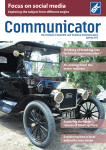
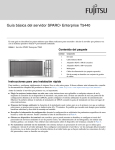
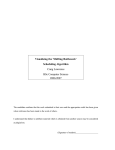

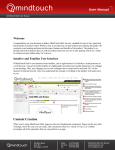
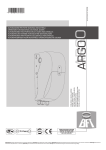
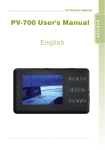
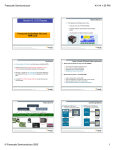
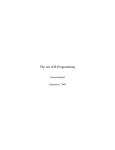


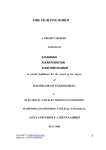
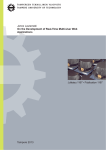
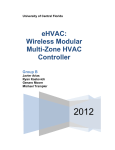
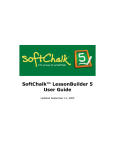
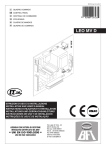
![webcademie-programme [720.99 Ko]](http://vs1.manualzilla.com/store/data/006420325_1-1b6a730fdb186f5d646e70ec3bf998e1-150x150.png)

